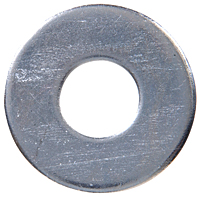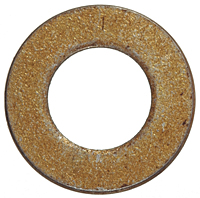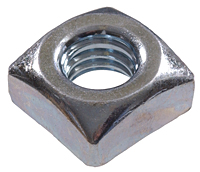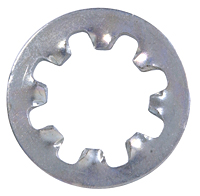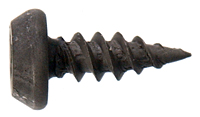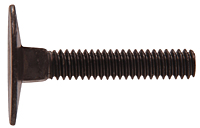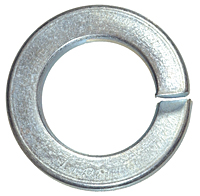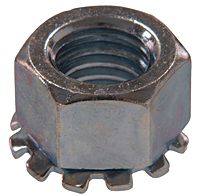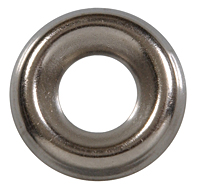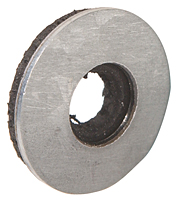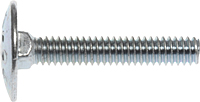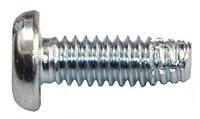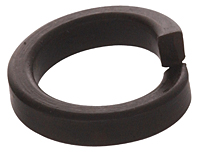
Pliers are used to grip, position, tighten, loosen, and cut certain metal elements. Learn about five types of pliers: slip-joint, water-pump, linesman, locking and needle-nose.
Slip-Joint Pliers
The slip-joint pliers were the tool that I first learned to call pliers. Only later did I discover that there were more kinds of pliers than there were kids in my neighborhood.
A pair of slip-joint pliers isn’t exactly a high precision tool, but even as a boy I discovered that pliers could help perform a great many everyday tasks around the house, whether it was fixing my bicycle, the kitchen stool, or a bit of wiring. They are handy for holding or bending flat or round stock, can crimp sheet metal, loop a wire, cut soft wire nails, remove cotter pins, and, if necessary, loosen or tighten a nut.
The key to the versatility of this tool is the slipjoint that gives the pliers their name. Like most pliers, they are operated by opening and closing the handles, which produces an opening and closing action of the jaws. But slip-joint pliers have the added advantage of an adjustable pivot point, which allows the two parts of the jaws to be shifted with respect to one another. So a pair of slip-joint pliers can be used to grip securely objects ranging in thickness from a single sheet of paper to a half inch or more, depending upon the size of the pliers. Most slip joint pliers have two or three options for positioning the pivot point.
At its mouth, the pliers’jaws are flat and serrated, but they curve at the back of the jaw near the pivot. This curved area, once known as the burner grip because it was originally used for removing the jets from gas lamps, will grip rounded objects like pipes or rods. Many slip-joint pliers also have a wire cutter built into the neck of the pliers, just behind the curved serrations.
Slipjoint pliers can be purchased in various sizes, ranging from almost toylike models only a few inches long up to ten inches. A pair of seven-inch slip-joint pliers probably belongs in your kitchen-drawer toolbox (or its equivalent, wherever it is) that contains a handful of small-scale tools that come to hand quickly and easily for minor repair or adjustment tasks in your household.
Slip-joint pliers are also manufactured in bent-nose and narrow- nose configurations, but a standard pair is the most useful for most purposes. Buy a pair with insulated handles for added comfort.
Water-Pump Pliers
This grouping of pliers features several variations on the same theme. Sold in designs known as arc-joint pliers, Channel-Lock Pliers (a proprietary name), and known in conversation simply as pumps (as in, “Hand me those blue-handled pumps, will you, Michael?”), these tools are designed for gripping pipes. The jaws are angled to the length of the handles so that reaching between joists and into awkward spaces is easier.
Water-pump pliers are not the sole province of plumbers, as they have a variety of other applications.
The jaws of water-pump pliers are serrated, with a curved shape. Like slip-joint pliers, they can be adjusted to grasp various sized objects. The pivot point on arc-joint models shifts like that on slip-joint pliers, while on others there are a series of grooves that allow the jaws to be positioned at different openings but that keep the jaws parallel to one another. The varieties with the channel design offer a more positive grasp of the pipe or other object. The jaws may be set
in seven different positions on many varieties of plumber’s pumps.
Water-pump pliers come in various sizes, ranging from four to 16 inches in length, and the models in the middle of that range are the most generally useful. On all models, the handles are long in proportion to length of the tool, providing for maximum leverage. Water-pump pliers are made of steel, and the kind with handles sheathed in plastic are the most comfortable to use.
Linesman’s Pliers
Sometimes called electrician’s pliers or engineer’s pliers (the latter variety is often sold without insulated handles), these are very versatile steel tools. Linesman’s pliers are descendants of nineteenth-century tools called bell pliers, because they were used by bell hangers for cutting and twisting the wires used to connect un-electrified household bells.
Like other pliers, they hinge at a pivot point, so working the handles together or apart causes the jaws to close or open. The jaws have shallow serrations for firm gripping, especially of flat objects like sheet metal, which explains their popularity among sheet-metal workers. An electrician relies upon the jaws for twisting together wires into a cone-shaped knot that is then protected by a plastic insulator called a wire nut. Immediately behind the jaws are a pair of side cutters, designed for cutting wire. Using them to cut nails will dull them quickly.
Though the pliers are sold in various sizes, with lengths from five to 10 inches, the eight-inch size serves most needs. Buy a pair with plastic grips, but keep in mind that the plastic alone is not sufficient to protect you from electric shock. Do not use these – or any other tools – on live wires. Always remove the fuse, turn off the breaker, unplug the cord before performing any electrical work.
Locking Pliers
These adjustable pliers are designed to be used as a hand-held vice or clamp that locks firmly onto a workpiece. Also called plier wrenches, lever-wrench pliers, and by the proprietary name Vicegrips, they have a double-lever action.
Their jaws are closed like those on other pliers by squeezing the handles together. However, the jaw opening is adjusted by turning a screw-drive in one handle and when the jaws contact the object to be gripped, the added pressures lock it in a vice-like grip. To release the tool’s grip, a lever in the other handle is triggered. The compound lever action of the tool means that the jaws can apply tremendous force.
Locking pliers are manufactured in several different configurations and sizes. Most have serrated, straight jaws, and are found in lengths ranging from four to twelve inches. Models with curved jaws are also sold, as well as long-nose, flat-jaw, smooth-jaw, and C-clamp configurations. The multipurpose locking pliers can be used in place of pipe wrenches, adjustable wrenches, or even clamps.
As with other varieties of pliers, locking pliers should be used rarely, if at all, on nuts, bolt heads, pipes, or fittings that are to be reused. The serrated teeth on most locking pliers can permanently damage the parts onto which they are clamped.
Needle-Nose Pliers
These are essentially small-scale electrician’s pliers, with long, tapered jaws. Smaller in scale than linesman’s pliers, the needle-nose pliers are particularly well suited to working with wire in confined spaces like electrical boxes, though they are also useful for bending and holding metal fittings. Their jaws taper to a point, and at the nose have serrations on the gripping surface. At the throat of the tool near the pivot there is a side cutter.
Sometimes called radio pliers, this tool is also handy for working with small nuts, washers, or other pieces that need to be precisely placed, perhaps out of the reach of your fingers. Needle-nose pliers can be purchased that have their tips bent at angles of 45 or 90 degrees to the line of the handles.
In using needle-nose pliers, keep in mind that they are not for heavy-duty work. They are delicate tools, and their jaws can be sprung, bent, or broken, if abused. Use them for the kind of spot jobs for which they were intended, not for more demanding tasks.



